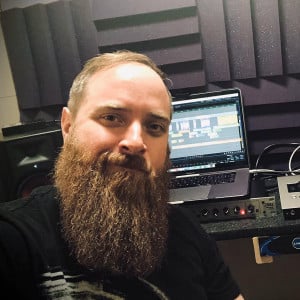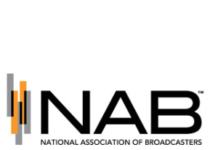
You’ve heard plenty of them: radio ads that suck. Forget about making you remember the client, they make you remember the other preset buttons exist. They’re all over radio and hurt the perception of the great reach medium an advertiser could hope for. Every day this week in Radio Ink‘s headlines, we’re talking with a different expert – from local production to agency veterans – on how to stop the “suck.”
Today we talk with Radio Mercury Award-winning Production Director TJ Hower at Seven Mountains Media in Olean, NY – Nielsen market 223. TJ finished first in the 2023 Broadcast Radio Commercial: Radio Station or Group category with his commercial for Seneca Lodge. It’s one thing to produce great spots in a small market, it’s another to go up against the big guys and come away victorious. TJ tells us how.
Radio Ink: Okay, we’ve established a lot of radio ads suck. What percentage of ads running right now don’t suck?
TJ Hower: You know, I’d like to say it’s a 50-50 split. That’s probably being a little generous. Maybe 60% of the ads out there suck.
Radio Ink: So what makes you cringe the hardest in a bad spot? What’s unforgivable to you?
TJ Hower: So when we first get salespeople that start with our cluster of radio stations here in Upstate New York, I give them a sheet of every cliche you could think of. I tell them I don’t ever want to see any of this in any of your ads.
Radio Ink: Top three worst cliches – go!
TJ Hower: Serving the community since XYZ. From our convenient location on something, something Main Street. Then let’s hit them with four different points of contact.
Sometimes we want to cram everything into that 30 or 60 seconds. No, you’ve got to read the book one chapter at a time.
Radio Ink: Your Seneca Lodge spot won the Radio Mercury Award for Best Broadcast Radio Commercial this year. Tell us about the creative process that goes into an award-winning spot.
TJ Hower: The inspiration for this project happened almost by accident. We found it in the most unexpected of places. I had accompanied the Account Exec on a trip to meet with the client and found myself drawn to the vibe at Seneca Lodge. It’s on the banks of Seneca Lake in the Finger Lakes region of Upstate New York. It was like something straight out of a postcard. The environment reminded me of my time as a Boy Scout, like a woodland getaway.
I realized our mission wasn’t about booking rooms in a traditional hotel or accommodating transient customers on their journeys. It was about promoting a destination. We needed to invoke a theater of the mind, paint a mental picture for potential visitors, and create a narrative that detailed the escape they could find there.
As an advocate of the ‘theater of the mind’ concept, I wanted to tap into this storytelling vein to craft a compelling narrative. We aimed to highlight the contrast between the mundane anxieties of everyday life and the serene tranquility of nature. We wanted the listeners to feel the stress and then encounter the calming effects of nature’s sounds.
We ended up of making fun of the discomfort of everyday life in the struggles and the stresses and the noise. Sometimes everything gets scrambled in our brains until we feel like it’s all mush and we just need some time to just decompress. So in contrast, we painted a picture of tranquility and relaxation in nature. Maybe you get a craft beer or two, you can go hiking and biking, or you can do absolutely nothing. That’s the beauty of it.
Radio Ink: Your Seneca Lodge spot was a :60. Those are a point of commercial contention these days. Are 60 second spots becoming a lost cause to most salespeople and clients? Is it just a :30 and :15 world?
TJ Hower: I don’t think length matters if you have something interesting to say. Yes, I think attention spans are dwindling. You can’t have 120 second ads like eons ago in this industry. But I think if you have a concept that’s engaging enough to pull the listener in, you can totally keep their attention for 60 seconds or at least the majority of the time to drag them in.
We’ve started doing more :15s at our cluster here with Seven Mountains Media, probably more than I’ve ever seen before outside of billboards and sponsorships. I don’t take one side or the other when it comes to this war on spot lengths. If you can say something interestingly enough in 30 seconds, then only use 30 seconds, but with the Seneca Lodge spot, it took quite a while to just kind of set that scene. The ad needs to be as long as it needs to be.
Radio Ink: Let’s extend that a little bit further to spot breaks in general. They’ve been getting longer for a long time, but there’s been a real push recently to rein them in. Does that matter if all the ads are high quality?
TJ Hower: There’s probably a couple of schools of thought when it comes to music interruption. We generally try to stop the music less, which I believe what most stations try to do. However, I did work for a group where we stopped the music four times an hour, but each break was less than two minutes. So we’re taking a quick break, but we’re back to the music as quickly as we can. Honestly, I’m not sure if one approach is better than the other.
As a listener, I’m a strange breed working in this industry because sometimes I’m like let’s just get the music over so I can hear the commercials. But I don’t know. If we do a good job writing, producing, and keeping things fresh and entertaining, the length of the stopset starts to matter less.
Radio Ink: Another hot topic – artificial intelligence, of course, is making its way into radio and production. There are copywriting apps. There are voice talent apps. There are ones that will do all of the above and then throw music behind it. How do you think artificial intelligence is going to impact radio advertising and its quality?
TJ Hower: I really haven’t decided. So we’re exploring a new prep service with our stations up here from Futuri. They’re gaining quite a reputation due to their AI-generated show prep and copywriting ideas. I’ve used AI tools, like Chat GPT, to spark ideas, but maybe I’m old school or perhaps a Renaissance man. I believe the best ideas come from real life experiences and conversations with friends and family. They might originate from real-life scenarios or come to me in a weird fever dream, who knows?
I think AI tools can be helpful sometimes to try to get the wheels of creativity going. I’m always trying to come up with the next big creative idea, which isn’t easy. In a creative role like this, you’re expected to just have this this steady stream and I’m one of those people that maybe I’ve got to mull it over for a little bit. I’ve got to let it marinate in my mind. But I’ve used AI-generative software to initiate ideas.
As far as what that means for having programs do the whole shebang with a script and AI voice generation and slapping it together with music, it gets me fired up about lessening the volume of work. Handling the writing and production for nine stations can be a tall order, so I can see potential benefits of AI there.
I guess as a writer and producer, it does freak me out a little bit with AI voices potentially replacing on-air talent. I saw you all run a story about a station in Washington State replacing a live host with an AI voice. It’s something we need to consider seriously, though. It might not be a “TV killed the radio star” situation, but it will certainly create challenges.
It could be particularly useful for newcomers in the industry to get started – a kind of cheat code, if you will. As for old dogs like me, sometimes I’m reluctant to learn new tricks.
Radio Ink: There will be a lot of sales people and sales managers reading this. What’s the number one thing that they could do that could help production directors create better spots?
TJ Hower: To me, preparation is key. It’s the information-gathering and research phase that forms the major boundary between a salesperson’s role and a creative’s. I always emphasize the importance of homework to new hires at our company. When they first join up with our company, I sit them down and we go over this presentation I built maybe for an hour or two. One of the first things I tell them is what you do in that research phase is going to affect everything.
This customer needs analysis phase, or discovery phase, is the most critical part of our work. If we don’t get the most information that can be beneficial to the campaign, such as understanding the customer’s needs and wants, performance metrics, benefits of buying from them, and unique selling propositions, we won’t succeed.
When you skip doing that work, it’s like trying to fake a book report for a book you’ve never read. You’re making things up. That’s when we end up falling back on all those cringe-worthy cliches we talked about earlier.
So, I would say the most crucial step to creative people from the sales team is to gather as much information as possible, even if it may seem irrelevant. There might be some little nugget in there that we can expand on; that might give us an idea for a campaign or a series, or at least give us some direction as to where we can take our ideas.
Radio Ink: To close, what has you the most positive about the current state of radio advertising?
TJ Hower: I’m really appreciating the growing portability of radio and audio. Despite competition with digital platforms like Spotify, YouTube, and other streaming services, the evolution of radio into a mobile form is exciting. Most of our stations, if not all, have apps. We’re discussing the integration of these apps into vehicles manufactured by different automakers. While I don’t want to get into the AM/FM debate, there’s undoubtedly a strong emphasis on radio’s portability.
Radio no longer requires you to be stationary in front of a stereo. You can carry your favorite station with you wherever you go. This accessibility caters to the modern listener’s need for companionship and connectivity. Even for people on the go, we can still engage with them on a personal level, no matter their location.
One of the beauties of radio is its capacity for active or passive listening, which allows for multitasking. This is something that mediums like television don’t offer. For instance, you can’t read a magazine or sift through your phone while driving, but you can safely enjoy audio and radio.
The core of radio’s enduring appeal, I believe, is its portability. This feature will help it stand the test of time.
In tomorrow’s installment, we talk with two of iHeartMedia’s top commercial minds, Rahul Sabnis and Jill Belloma. In their work with The Studio at iHeartMedia, they’ve created award-winning ads at every level, from household brand names down to local clients.
Read Part 1 of “Why Do So Many Radio Ads Suck?” with iconic adman Terry O’Reilly here.
To get the most out of your copy, ads, and sales, check out Radio Ink’s Radio Masters Sales Summit – September 13 and 14 in Cincinnati, Ohio.










Radio has been portable for a very .. very long time. That’s not a new thing at all. Transistor radios, walkmans, car radios … radio is the original portable medium.
As someone who believes in all of what TJ does, I know that too often only the most creative commercials win awards. But there really should be an enhanced version of the award that says something about whether it worked and/or expectations were met. I have written and produced of ton of commercials that I would not consider entering for an award, but man did they ever work! So, it wasn’t so much the Broadway stage of super production, but the strongest content that engaged, emoted, and energized into action